Volleyball Variations For Fun And Variety
Looking for some volleyball variations to keep things fun and fresh? Then you have come to the right place! This page will not only give you some variations on the classic game, but some completely different games based on volleyball as well.
3 Man Volleyball
One of the frustrating things about volleyball is that it is a sport that requires at least four people to play. So, what happens when only 3 of the four show up? Make the best of it with this variation of volleyball!
The way that you play with three person is that a person is the permanent setter. As soon as they set the ball for one player, the go under the net and get ready to set the ball for the other player.
The two players that are passing and hitting keep score. Once a player gets to 5 points (or 10 if you want a longer game) the players will rotate positions.
Since the whole court is a lot of area for one person to cover, you will want to shrink the court size. Most people will use the attack line as the end line so that you are required to make better hits.
King/Queen Of The Court
Although this is a variation of a game that is usually done at volleyball practice, I really like it because of the competitive spirit it brings out from those playing.
The people playing will split up into pairs (or threesomes if you prefer) and one side of the court is labeled as the king/queen side. For each point scored by the kings/queens while they are on that side, they get one point and the losers go off and are replaced by the next team.
The team coming on will serve the ball to the kings/queens, and play will resume.
The whole point of the game is the bragging rights of who can score the most points while being the kings/queens of the court. If you get the right people playing this game, it can be very entertaining!
Water Balloon Volleyball
This is one of the volleyball variations that people like because it can be played by anyone at any skill level. In fact, this one is often played with kids, teenagers, or even at family reunions.
Based on the name of this variation of volleyball, you will need to prepare some water balloons before you want to play. You can really play with just about any number of people. The people will pair off if you are using towels with one person at each end of the towel.
If you want to use this as a way to develop unity and build a group, then use one bed sheet per team. That will require each team to work together for this to work.
Once the people are divided into two teams, one team will “serve” by having a water balloon in their sheet, or towel. They will launch the water balloon over the net and the other team will do their best to catch the balloon in the sheet or towels.
Basically, you will play until you run out of balloons. Usually, the teams will just grab a handful of water balloons and it turns into a water fight, but that is also half of the fun!
That is what makes this one of the funnest volleyball variations out there.
Wallyball
This is a hybrid of volleyball played in a racquetball court so that there are walls on all sides of the court which is where the name comes from.
For more information on this sport, take a look at this link.
Swimming Pool Volleyball
If you like water, then you will probably love this one the most of all the volleyball variations.
You play it just like volleyball with the only difference being that play stops if the ball hits the water.
You will need a special kind of net for this type of volleyball. Here is one that I recommend because it is highly durable: Deck Mounted Swimming Pool Volleyball Net Set – Brass Anchors
I hope you have enjoyed these volleyball variations that bring some freshness and variety to this great sport!

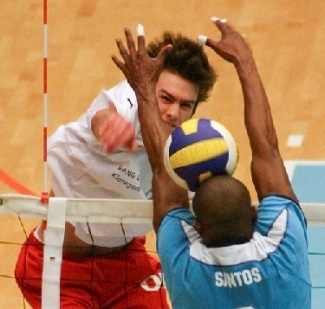
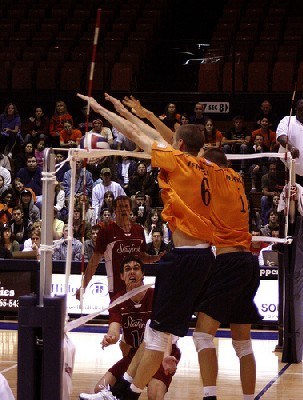
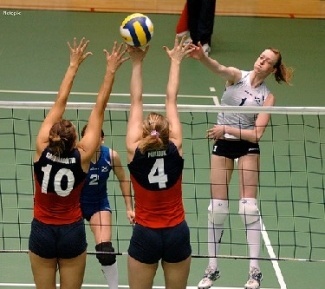 Shoot: This volleyball term is a type of set that is quick to the outside hitter. The outside hitter is usually jumping at the time the setter gets the ball and the setter pushes it just barely higher than the net and the hitter hits the ball.
Shoot: This volleyball term is a type of set that is quick to the outside hitter. The outside hitter is usually jumping at the time the setter gets the ball and the setter pushes it just barely higher than the net and the hitter hits the ball.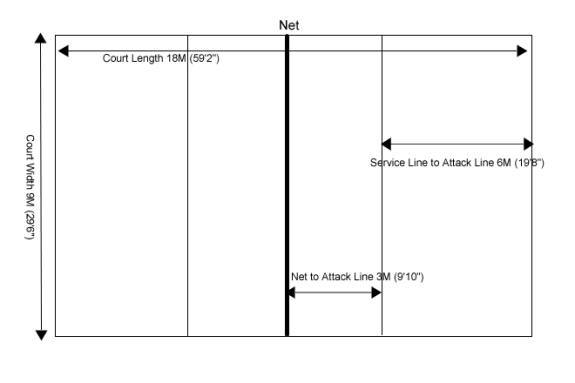
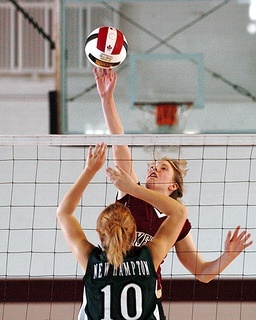 Back row attackers are used to create some devastating plays. If your setter were to set a #1 for your middle blocker and then have the player in the back row in the middle position attack, it would be a difficult play to stop. Why? Because the players blocking in the middle on the other team are going to jump to block the front middle hitter, and then as they are landing from their block, the back row hitter would be the one to hit with virtually no blockers.
Back row attackers are used to create some devastating plays. If your setter were to set a #1 for your middle blocker and then have the player in the back row in the middle position attack, it would be a difficult play to stop. Why? Because the players blocking in the middle on the other team are going to jump to block the front middle hitter, and then as they are landing from their block, the back row hitter would be the one to hit with virtually no blockers.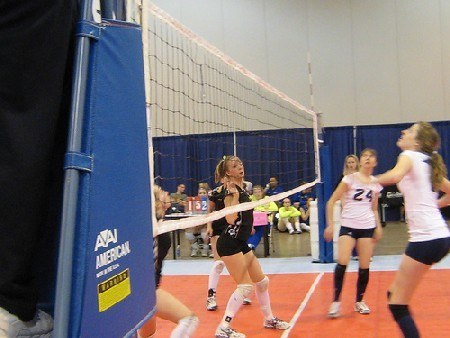
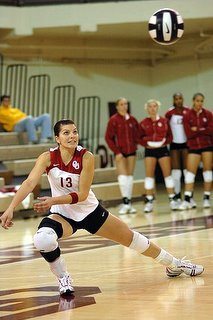 When the outside hitters are also the most accurate hitters on the team. When they are spiking, their place is on the left side of the court (if you are facing the net). Since they are hitting on the outside, their sets are usually higher and to the outside of the court.
When the outside hitters are also the most accurate hitters on the team. When they are spiking, their place is on the left side of the court (if you are facing the net). Since they are hitting on the outside, their sets are usually higher and to the outside of the court.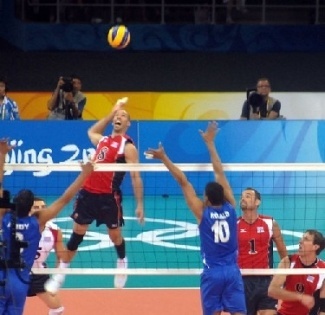 They are generally a third option on the offense at the net as a hitter. Their hitting position is on the right side of the court if you are facing the net.
They are generally a third option on the offense at the net as a hitter. Their hitting position is on the right side of the court if you are facing the net.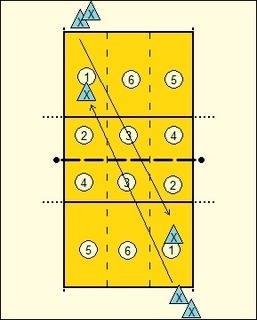
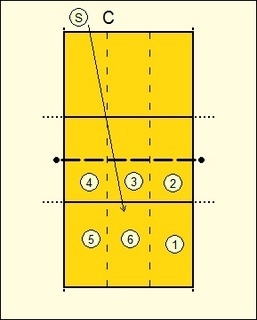
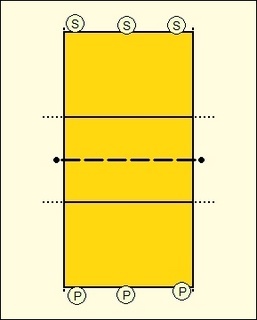 This last volleyball serving drill is to focus on serving short and doing it in a competition type setting. I like competitive drills as it motivates people to achieve more. The drill goes like this:
This last volleyball serving drill is to focus on serving short and doing it in a competition type setting. I like competitive drills as it motivates people to achieve more. The drill goes like this: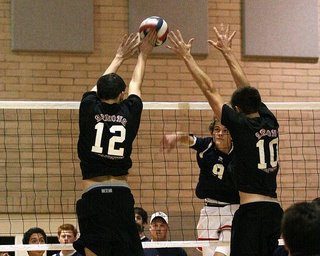 Blocks are demoralizing to the other team. After a few good blocks, they will begin to think that they cannot hit around you or off of you. At this point, you will be getting in their heads and, in many cases, that is worth more than the actual point that was won from the block.
Blocks are demoralizing to the other team. After a few good blocks, they will begin to think that they cannot hit around you or off of you. At this point, you will be getting in their heads and, in many cases, that is worth more than the actual point that was won from the block.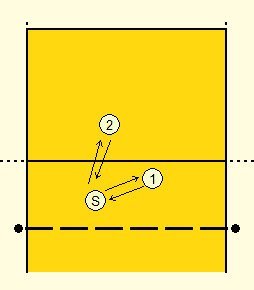 Setting Triangle Drill
Setting Triangle Drill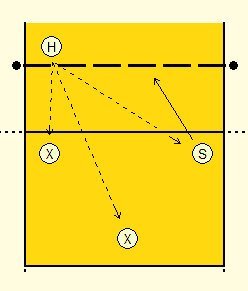 Ball Bettering Drill
Ball Bettering Drill Setter Defense Drill
Setter Defense Drill